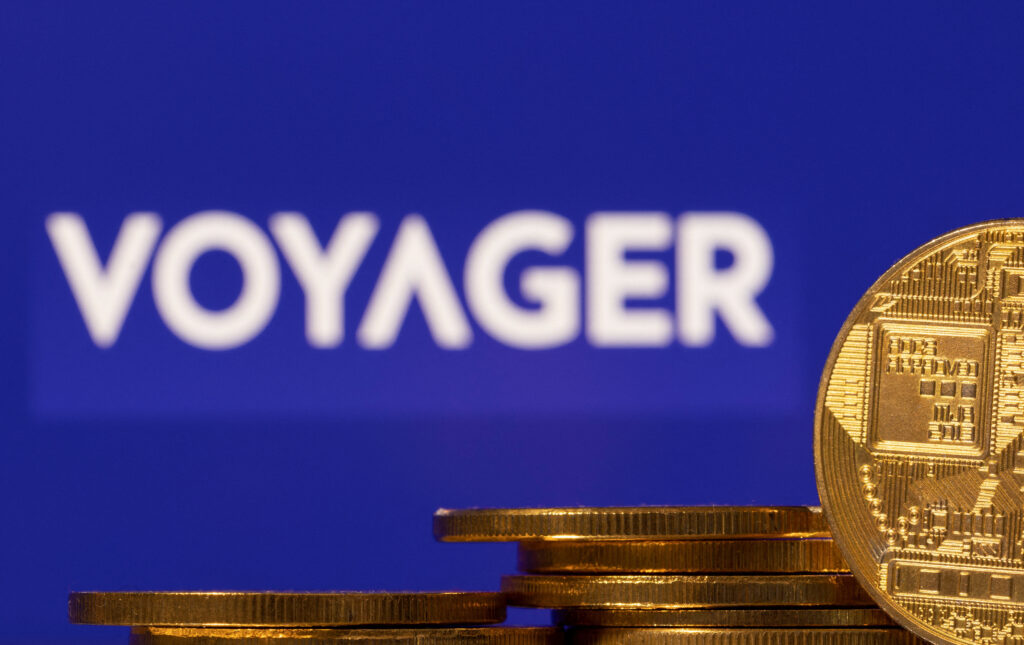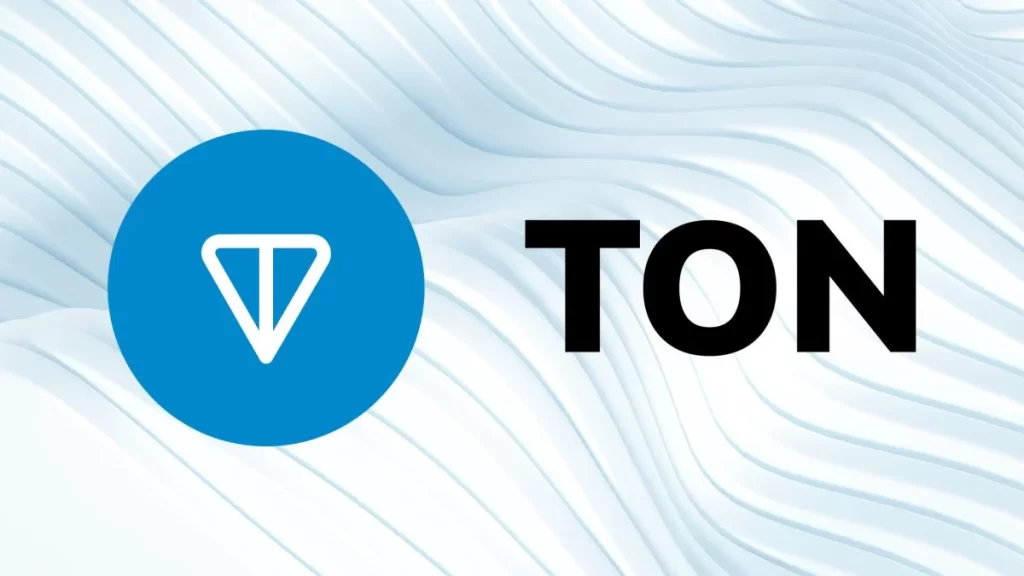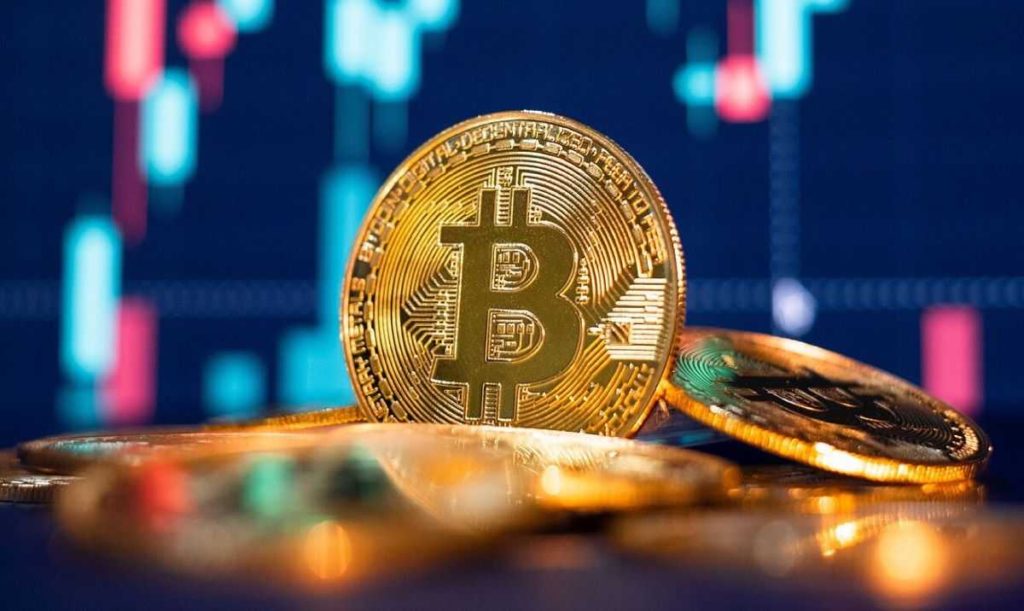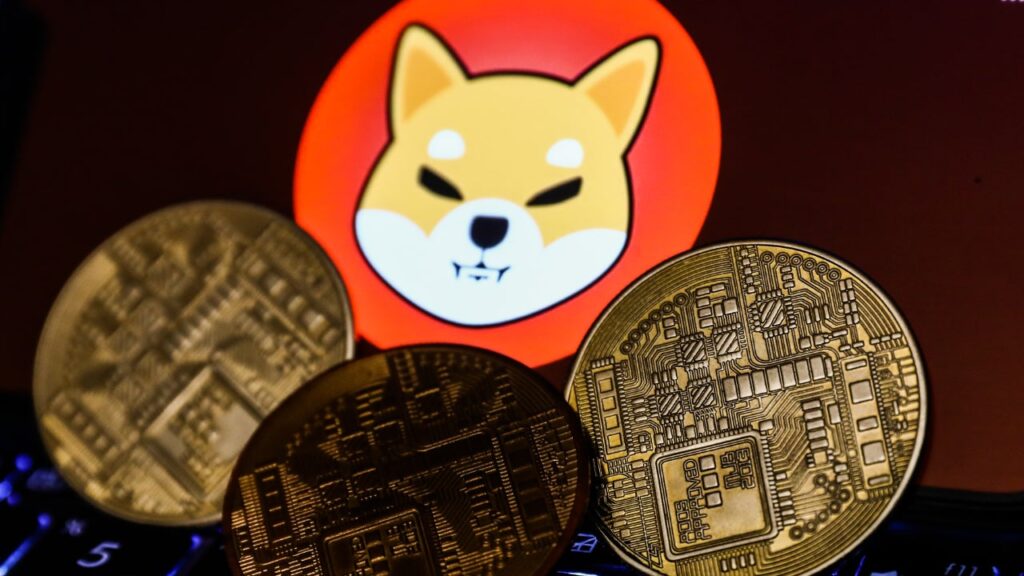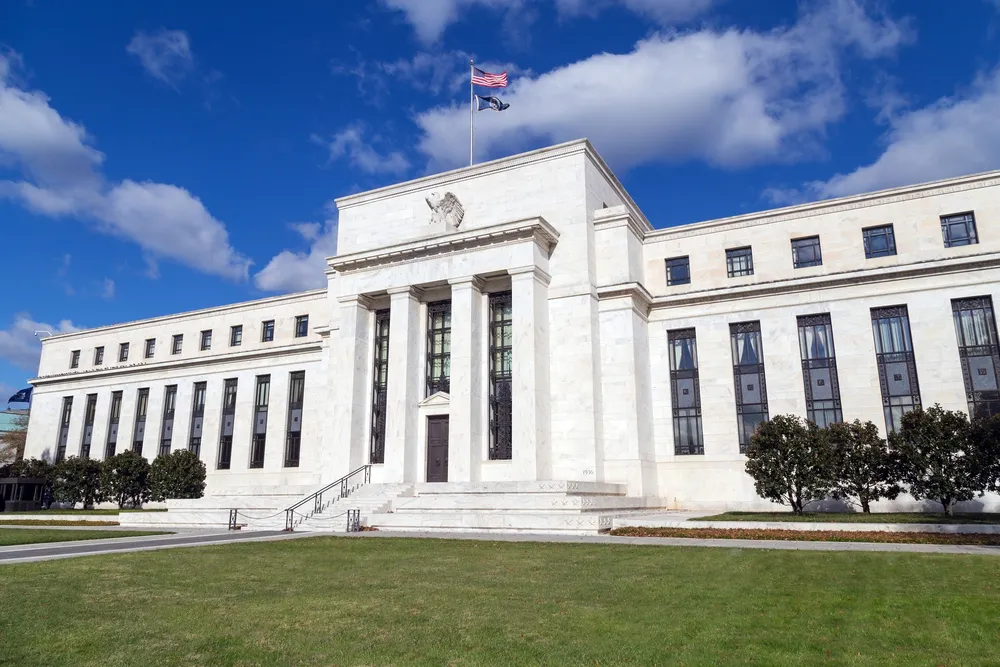McDermott Will & Emery, the legal firm responsible for representing Voyager’s committee of unsecured creditors, has issued a bill of $5.1 million for their services rendered between March and May.
This latest invoice contributes to a total compensation charge of $16.4 million, surpassing the initial budget of $11.2 million allocated for the restructuring process.
To date, the creditors have disbursed $8.9 million toward the billed compensation.
Among the notable billings from McDermott attorneys during this period, $1 million was charged for 970.9 hours of work on plan and disclosure settlement.
This particular task involved engaging in discussions about potential sale options with the Debtors, meeting potential buyers, and reviewing objections presented by other stakeholders.
READ MORE: Co-Founders of Collapsed Three Arrows Capital Pledge Donation to Creditors
It is worth noting that in previous billing periods, considerable efforts were dedicated to a potential asset sale to FTX, a deal that ultimately fell through with the exchange’s bankruptcy.
Furthermore, in addition to the fees incurred by McDermott Will & Emery, Voyager, the debtor, has also paid $1.1 million to the law firm Kirkland & Ellis for their representation throughout this case.
The market downturn experienced in 2022 led to a surge in bankruptcy filings, which proved to be lucrative for law firms.
Notably, firms such as FTX and Celsius have spent over $200 million and $50 million, respectively, on legal fees.
Critics of this situation argue that these exorbitant costs and lengthy legal processes have a detrimental effect on the funds available to creditors.
As more money is allocated to legal fees, the amount recoverable by creditors diminishes.
In summary, McDermott Will & Emery has presented a bill of $5.1 million to Voyager’s committee of unsecured creditors for their services rendered between March and May.
This brings the total compensation charged to $16.4 million, exceeding the initial budget. Additional expenses incurred by Voyager include a $1.1 million payment to Kirkland & Ellis.
While the legal industry has profited from the surge in bankruptcies, critics contend that the substantial costs and protracted legal proceedings adversely impact creditors’ potential recoveries.
The TON Foundation, developer of the Open Network (TON), recently announced the release of an on-chain encrypted messaging feature.
This development allows users of TON to send private messages to one another, ensuring enhanced privacy and security.
TON originated as a blockchain network that was forked from code initially developed by the team behind the popular Telegram instant messaging app.
Despite Telegram discontinuing its involvement with the project in July 2020 without launching a mainnet, they open-sourced TON’s code, enabling others to continue building upon it.
The TON Foundation took up the reins and built the current network, known as “TON,” emphasizing its scalability, transaction throughput, and decentralized nature compared to other options within the Web3 ecosystem.
READ MORE: Gemini CEO Threatens Legal Action Against DCG Over Delayed Funds
Previously, TON users could include messages within their transactions, but these messages were fully public.
With the introduction of the new encrypted messaging feature, users can now encrypt these messages end to end, ensuring that only the intended recipient can read them.
According to Anatoly Makosov, a core developer of TON, this feature was created to personalize transactions.
Users have long been able to include text for the recipient, such as “for coffee” or “happy birthday,” thereby enhancing the interaction.
Now, this popular feature is available with full encryption.
Additionally, Makosov highlighted the utility of encrypted messaging in scenarios where traditional messenger servers fail, referring to it as a reliable and safeguarded method of private communication.
Several retail wallet apps, including MyTonWallet, OpenMask, and TON Wallet, currently support encrypted messages.
The TON Foundation also announced that the feature will be incorporated into the mobile wallet app Tonkeeper in upcoming updates.
In efforts to foster the growth of the network, the TON Foundation launched a $25 million accelerator program in May to incentivize app developers to build on TON.
Furthermore, an independent development team introduced a Telegram trading bot in November, facilitating user onboarding to the TON network.
With the introduction of on-chain encrypted messaging, TON continues to solidify its position as a blockchain network that prioritizes privacy and security while offering a scalable and decentralized ecosystem for its users.
Floor prices of prominent ‘blue chip’ nonfungible token (NFT) collections have plummeted to their lowest levels in almost two years.
Yuga Labs’ Bored Ape Yacht Club (BAYC) collection, the second-largest by market capitalization, reached a floor price of 27.7 Ether (ETH), equivalent to $54,200, on July 3.
This drop marks a significant decline not seen since September 2021. Other notable collections, including Mutant Ape Yacht Club (MAYC), Azuki, CryptoPunks, and DeGods, also experienced a decline in floor prices over the past week.
However, there has been a slight recovery in floor prices across most of the top collections in the last 24 hours, bringing some relief to NFT holders. Azuki Elementals emerged as the biggest gainer with a nearly 32% increase in floor price.
In an unexpected move, Credit Suisse, the Swiss-based bank, has entered the NFT space by partnering with the Swiss Football Association.
They announced the launch of 756 Ethereum NFTs, with all proceeds dedicated to supporting women’s soccer in Switzerland.
Through their CSX app, Credit Suisse will make these NFTs available, without requiring any crypto or crypto wallet.
Swiss francs will be used for purchasing the NFTs, providing a simple and client-friendly approach to accessing digital assets.
Each NFT portrays a player from the Swiss Women’s National Team and offers different levels of perks and benefits based on rarity.
Meanwhile, Melania Trump’s Solana NFT collection, released ahead of Independence Day celebrations in the United States, has seen slow sales. Of the 3,000 NFTs released on June 29, only 586 have been sold so far.
The collection, known as the “1776 Collection,” features six designs adorned with patriotic symbols, priced at $50 each.
French luxury brand Dior recently unveiled a new line of shoes, one of which comes with a digital twin in the form of an Ethereum-based NFT.
Interestingly, Dior’s launch announcement avoided explicitly mentioning the term “NFT,” referring to the digital twin as a “unique and secure digital creation on the Ethereum blockchain.”
The B33 sneaker, priced at $2,150, includes the NFT twin, while the other styles come with a near-field communication chip providing access to a “Digital Certificate of Authenticity.”
In other news, blockchain security firm PeckShield discovered that half of all stolen NFTs are sold within three hours on platforms like OpenSea and Blur.
Hermès, another luxury brand, obtained a significant legal victory against NFT artist Mason Rothschild, as a U.S. judge ordered a permanent injunction on all sales of the “MetaBirkin” NFT collection in an infringement case.
The NFT market continues to evolve rapidly, experiencing both price declines and new entrants from diverse sectors, showcasing the dynamic nature of the digital asset space.
Other Stories:
Bullish Momentum Builds For Bitcoin & Altcoins
Bank of America’s Crypto Research Division Publishes Tokenization Report
Binance’s Reversal on Delisting Privacy Coins Marks a Major Win for Privacy Advocates
Bitcoin (BTC) has been trading within a narrow range in recent days, but its remarkable 84% rally in 2023 remains a significant achievement.
This impressive recovery in Bitcoin’s price has also contributed to the rise of several altcoins, which have experienced substantial gains from their yearly lows.
As the second half of the year commences, the burning question on every investor’s mind is whether the rally will continue.
Data from CoinGlass reveals that since 2013, July has only seen three negative monthly closes, with the largest decline being 9.69% in 2014.
This indicates that the bulls currently have a slight advantage.
The recent surge in Bitcoin and altcoins can be attributed in large part to the hopes surrounding the approval of a spot Bitcoin exchange-traded fund by the United States Securities and Exchange Commission.
However, any negative news on this front could quickly shift the sentiment to bearish, resulting in a significant sell-off.
At present, Bitcoin and select altcoins are displaying strength. Let’s examine the charts of the top five cryptocurrencies that may sustain their upward movement in the coming days.
Bitcoin’s price analysis indicates that it continues to trade near the strong overhead resistance at $31,000.
This suggests that the bulls are not in a hurry to take profits as they anticipate another upward surge.
Typically, a consolidation near a crucial overhead resistance leads to an upward breakout.
The rising 20-day exponential moving average ($29,278) and the positive relative strength index (RSI) indicate that the path of least resistance is upwards.
If the bulls manage to propel and maintain the price above $31,000, the BTC/USDT pair is likely to initiate the next leg of the uptrend.
This bullish momentum may push the price above the immediate resistance at $32,400, potentially propelling the pair further towards $40,000.
On the other hand, if the bears regain control, they would need to sink the price below the 20-day EMA, potentially leading to a decline towards the 50-day simple moving average ($27,622).
Litecoin’s price analysis reveals that it recently surged above the descending channel and broke the overhead resistance at $106 on June 30, signaling the resumption of the uptrend.
Although the bears briefly pulled the price back below the breakout level on July 1, the bulls quickly bought the dip.
If buyers successfully sustain the price above $106, it increases the likelihood of a continued rally. In that case, the LTC/USDT pair could soar towards the overhead resistance zone between $134 and $144.
However, a slip and sustained price drop below $106 would indicate that bears are selling at higher levels, potentially leading to a decline towards the psychological level of $100 and the breakout level from the channel.
Monero’s price analysis suggests that it rose above the downtrend line on June 23, invalidating the developing descending triangle pattern.
This failure of the bearish pattern often results in a short squeeze, as seen in the XMR/USDT pair’s surge from $150 on June 23 to $171 on June 27.
After the sharp rally, the price has been consolidating between $171 and $160.
This consolidation indicates that the bulls are holding their positions, anticipating another upward move.
If buyers manage to push the price above $171, the pair may initiate the next leg of the up-move, potentially skyrocketing to $187.
However, a drop back below the 50-day SMA ($149) would suggest bearish control.
Aave’s price analysis indicates that the pair has been trading within a descending channel pattern for several weeks.
However, recent price action suggests a change in sentiment, as the bulls are now buying on dips instead of selling during rallies.
The repeated retests of the resistance line weaken it over time. The rising 20-day EMA and the positive RSI indicate an upside bias.
If buyers successfully propel and maintain the price above the channel, the AAVE/USDT pair may embark on a new upward move towards $84.
On the downside, the 20-day EMA serves as crucial support, and a break below it may prolong the pair’s time inside the channel.
Maker’s price analysis reveals that the pair is attempting to start an upward move.
The recent dip to the moving averages between June 24 and 28 indicated demand at lower levels. The rising 20-day EMA and the overbought RSI favor the bulls.
However, the strong selling pressure observed at higher levels suggests caution.
If buyers manage to break above the downtrend line, the MKR/USDT pair may rally towards $979.
On the other hand, a drop below $772 would indicate weakness and potentially lead to a deeper correction towards the 20-day EMA.
In conclusion, Bitcoin and select altcoins are currently displaying strength in their price movements. While Bitcoin is trading near a crucial resistance level, the charts suggest an upward bias.
Litecoin, Monero, Aave, and Maker also show positive signs, but caution is advised as there may be some resistance at higher levels.
Traders and investors should closely monitor these cryptocurrencies to assess their potential for continued upward movement or a shift in market sentiment.
Other Stories:
U.S. Federal Reserve Certifies 57 Companies to Utilize ‘FedNow’ Instant Payments System
Pepepcoin, the frog-themed cryptocurrency, experienced a notable surge in prices during the latter half of June, reaching a monthly high of $0.00000179.
This price rally was fueled by increased volume, indicating strong buying momentum from market participants.
However, the current Pepecoin price is undergoing a post-rally correction, which has the potential to reignite the bullish momentum for another rally.
Analyzing the daily chart, we can observe the formation of a flag pattern within the 4-hour time frame.
A breakout above the upper trendline of this pattern would signal a continuation of the uptrend.
The trading volume for Pepecoin over the past 24 hours is $85.1 million, showing a 71% decrease compared to previous levels.
In the daily chart, the Pepecoin price has displayed alternating green and red candles for over a week, reflecting uncertainty among traders.
However, this pullback is contained within two downward sloping trendlines, suggesting the formation of a flag pattern.
The presence of this bullish continuation pattern implies that the ongoing correction is temporary, and buyers may resume the upward trend once the resistance trendline is broken.
As of now, Pepecoin is trading at $0.00000153, experiencing a 1.92% intraday loss and continuing to decline during the retracement phase.
Potential buyers may consider waiting for a breakout above the resistance trendline, which would provide a strong foundation for prices to reach the highs of $0.00000193 and $0.0000021.
The question remains whether Pepecoin can sustain its position above the $0.0000014 mark.
Flag patterns support the continuation of an established uptrend by offering intermittent pullbacks to recover bullish momentum and present better entry opportunities.
However, if the trendlines of the pattern are breached, Pepecoin’s price may experience an extended correction and potentially drop below the $0.00000140 mark.
Therefore, the support level aligned with the 38.2% Fibonacci retracement level becomes crucial in assisting buyers to break the overhead trendline.
Examining the Vortex Indicator, a VI+ slope above the VI- line indicates a bullish alignment and positive sentiment for further rally.
Additionally, the correction phase sustaining above the 50% Fibonacci retracement level indicates that the overall market trend remains bullish.
Other Stories:
Shiba Inu Twitter Scam Exposed By ‘Shibarmy Scam Alerts’
Shiba Inu (SHIB) Price Prediction For 2023 & 2025
U.S. Federal Reserve Certifies 57 Companies to Utilize ‘FedNow’ Instant Payments System
Sales of Ethereum (ETH) and Polygon (MATIC)-based non-fungible tokens (NFTs) on the popular marketplace OpenSea hit their lowest point of the year in the second quarter (Q2), according to data from Dune Analytics.
The decline in sales was primarily attributed to a decrease in interest in profile-picture NFTs, leading to a significant drop in monthly sales volume.
In February, sales of Ethereum-based NFTs on OpenSea reached a nine-month high of $643.61 million.
However, as the market interest in profile-picture NFTs waned, sales on the platform plummeted, resulting in a 75% decline in monthly sales by the end of June.
During the three-month period, OpenSea saw the highest sales volume in April, with monthly sales totaling $285.98 million.
However, this figure dropped by 36% in May and further declined by 43% in June, closing the quarter with total sales of $161.79 million.
Although June had the lowest sales volume for Ethereum-based NFTs on OpenSea this year, data from Dune Analytics revealed an 82% increase in the number of NFTs sold during the month.
In May, only 246,857 Ethereum-based NFTs were sold, while in June, this number surpassed 450,000. Nevertheless, there was still a 23% decrease in the total count of NFTs sold during the quarter.
OpenSea’s Polygon-based NFTs also experienced a significant decline in sales volume during Q2, with a drop of 59%.
After a record-breaking sales volume of $83.49 million in February, Polygon-based NFT sales on OpenSea have since declined by 89%.
June saw the lowest sales count of Polygon NFTs during the quarter, with a total of 228,859 sold, representing a 34% decline over the 90-day period.
The Blue Chip NFT Index, which measures the performance of top-tier NFT collections by market capitalization, also suffered in Q2. According to data from NFTgo, the index fell by 28% during the period, reaching 5990 ETH on June 30.
Leading NFT projects like the Bored Ape Yacht Club (BAYC) and CryptoPunks have experienced a downward trend in floor prices over the past six months.
The average price of a BAYC NFT currently stands at 31.5 ETH, marking a 54% decrease since the beginning of the year.
Similarly, the value of CryptoPunks has dropped by 34% in the same period.
Overall, the second quarter witnessed a decline in sales volume for both Ethereum and Polygon-based NFTs on OpenSea, as well as a decrease in the performance of Blue Chip NFT collections.
The market has been impacted by changing trends and a waning interest in certain types of NFTs.
Other Stories:
U.S. Federal Reserve Certifies 57 Companies to Utilize ‘FedNow’ Instant Payments System
Shiba Inu Twitter Scam Exposed By ‘Shibarmy Scam Alerts’
Cboe Resubmits Bitcoin ETF Application With Fidelity, Collaborates with Coinbase
The Shiba Inu ($SHIB) cryptocurrency, inspired by memes, has experienced a surge in activity and transactions as its layer-2 scaling solution, Shibarium’s testnet called Puppynet, achieved a significant milestone of 25 million transactions.
Notably, SHIB’s burn rate surged by 1,800% in the preceding 24-hour period.
PuppyScan, a dedicated block explorer for the Shiba Inu network, provided data indicating that the Shibarium testnet has processed a total of 25.5 million transactions, with an average of approximately 270,000 transactions per day.
Earlier this month, CryptoGlobe reported that Puppynet had surpassed the 20 million transaction mark, with around 16 million wallet addresses actively moving funds on the network.
Since then, the number of wallets on Puppynet has surpassed 17 million.
Another significant metric for the testnet is the processing of 1.49 million blocks.
The average block time, a crucial parameter in blockchain technology that measures the speed of adding new blocks to the blockchain, stands at 5 seconds.
The increased activity and interest can be attributed in part to a cryptic message shared by Shytoshi Kusama, the enigmatic lead developer of SHIB.
Kusama, who played a vital role in the development of Shiba Inu, posted a 19-second video clip on Twitter, hinting at upcoming developments within the Shiba Inu ecosystem.
Shibarium represents a milestone for the Shiba Inu ecosystem, which currently operates on the Ethereum network.
While Ethereum is known for its safety and decentralization, it faces scalability and transaction throughput challenges.
CryptoGlobe previously reported that the largest Ethereum whales hold more SHIB than any other cryptocurrency, excluding stablecoins and Ethereum’s native token.
According to WhaleStats, a whale monitoring service, the top 100 Ethereum whales collectively possess a staggering 49.62 trillion SHIB tokens, valued at approximately $600 million.
Other Stories:
Shiba Inu (SHIB) Price Prediction For 2023 & 2025
U.S. Federal Reserve Certifies 57 Companies to Utilize ‘FedNow’ Instant Payments System
Cboe Resubmits Bitcoin ETF Application With Fidelity, Collaborates with Coinbase
In its 11th round of token burn, Binance, the world’s largest cryptocurrency exchange, has burned a staggering 2.65 billion Terra Classic (LUNC) tokens.
This latest burn brings the total number of LUNC tokens burned by Binance to over 35.5 billion, while the community’s burn has surpassed an impressive 68 billion.
As a result of this development, traders have responded positively, leading to a 3% increase in the price of LUNC.
The burn took place on July 1, when Binance executed a transaction by transferring 2.65 billion LUNC tokens to the burn address, effectively reducing the circulating supply.
Additionally, the transaction incurred a transaction fee of 13.25 million LUNC tokens.
The Terra Classic burn mechanism operates automatically, burning tokens whenever a transaction occurs on the network.
The number of tokens burned is proportionate to the number in circulation, ensuring a constant decrease in the total supply of tokens. This mechanism theoretically increases the value of the tokens over time.
Last month, Binance burned 1.04 billion LUNC tokens, even though the exchange reduced its contribution from LUNC spot and margin trading fees from 100% to 50%.
Despite the reduction, the community expressed gratitude for the ongoing support from Binance and its CEO, Changpeng Zhao.
Over the past couple of months, the burn rate of LUNC tokens has improved significantly, thanks to initiatives from projects like DFLunc, Terra Casino, and Cremation Coin.
These projects have been burning millions of LUNC tokens on a weekly basis, contributing to the community’s successful burn of 68 billion LUNC tokens.
After completing a major upgrade in May, which aimed to align the chain with Terra 2.0 and other Cosmos chains, the community’s current focus is on reducing the supply of LUNC and TerraClassicUSD (USTC) tokens.
Additionally, the Joint L1 Task Force and the “quant” team will collaborate on the USTC repeg initiative.
In terms of price performance, LUNC has faced some challenges.
In June, the token struggled to surpass the $0.0001 mark and even dipped below the support level of $0.000090.
Despite Binance’s burn efforts, the price of LUNC remains under pressure, exhibiting a continued downward trend.
As of now, CoinMarketCap reports a 3% increase in the price of LUNC over the past 24 hours, with the token trading at $0.000087.
Other Stories:
Shiba Inu Twitter Scam Exposed By ‘Shibarmy Scam Alerts’
U.S. Federal Reserve Certifies 57 Companies to Utilize ‘FedNow’ Instant Payments System
Shiba Inu, the popular cryptocurrency, has fallen victim to yet another scam on Twitter. @LucieSHIB, the official content marketing specialist for Shiba Inu, recently reported a fraudulent account operating under the handle @ShibaInuHQ.
This scam account, claiming to be the “Official Twitter Account for the Shiba Inu Ecosystem,” is deceiving Shiba Inu enthusiasts by offering a fake giveaway of SHIB tokens.
The scam account’s strategy involves enticing users with the promise of a substantial giveaway, specifically a “SHIB/BONE/LEASH” prize worth a staggering $30,000,000.
However, this amount far exceeds the typical giveaways conducted by legitimate crypto exchanges or platforms. This fact should raise red flags for SHIB fans who come across such offers.
@LucieSHIB discovered the scam after the “Shibarmy Scam Alerts” profile (@susbarium) raised awareness about it.
The account is attempting to mislead SHIB enthusiasts by adopting the profile picture of the SHIB Metaverse, further complicating the identification of its fraudulent nature.
To appear more credible, the scam account even retweets posts from official Shiba Inu token and SHIB Metaverse accounts, including one about a giveaway of virtual land within the Metaverse.
This is not the first time the Shiba Inu community has faced such scams. Just days prior, @susbarium had warned about another scammer on Twitter who falsely claimed to have received a Shibarium testnet reward.
The SHIB anti-scam account alerted the community that the SHIB team had not been offering such rewards recently, urging users to exercise caution.
It is essential for SHIB enthusiasts to be vigilant and exercise due diligence when encountering giveaways or promotions online.
Authentic cryptocurrency exchanges and platforms typically conduct giveaways within reasonable limits, avoiding extravagant claims.
Users are encouraged to report any suspicious accounts or activities to help protect the Shiba Inu community from falling victim to scams.
As the Shiba Inu token continues to gain popularity, scammers are drawn to exploiting its dedicated fan base.
By staying informed and cautious, the community can collectively combat such fraudulent activities and preserve the integrity of the Shiba Inu ecosystem.
Other Stories:
Crypto Scams and Hacks Resulted In Almost $700 Million Loss In First Half of 2023
In a recent announcement, the U.S. Federal Reserve revealed that 57 companies have received certification to utilize its upcoming instant payments system, “FedNow,” set to launch in late July.
While an exact launch date was not provided, it is noteworthy that 41 banks and 15 service providers, including industry giants like JPMorgan Chase, Bank of New York Mellon, US Bancorp, and Wells Fargo, have successfully completed formal testing and will be poised to offer instant payments once the service is operational.
The introduction of FedNow marks a significant step forward in the evolution of the U.S. payment infrastructure.
With this system, individuals and businesses will have the ability to make instant payments, enabling faster and more efficient transactions.
This is particularly crucial in today’s fast-paced digital era, where speed and convenience are paramount.
The certification process undertaken by the 57 companies ensures that they are equipped to leverage the capabilities of FedNow seamlessly. It involves comprehensive testing and validation to ensure compatibility and reliability.
By successfully completing this process, these financial institutions and service providers have demonstrated their readiness to embrace the new system and deliver enhanced payment experiences to their customers.
Among the certified entities are major players in the banking industry, such as JPMorgan Chase, Bank of New York Mellon, US Bancorp, and Wells Fargo.
Their inclusion underscores their commitment to staying at the forefront of technological advancements and meeting the evolving needs of their customers.
By integrating FedNow into their operations, these banks will be able to offer real-time payments, providing greater convenience and efficiency for individuals and businesses alike.
The introduction of instant payments through FedNow will have far-reaching implications for various sectors of the economy.
It will facilitate faster business-to-business transactions, streamline payment processes for consumers, and enhance overall economic efficiency.
Furthermore, it will likely foster innovation in the fintech space, as companies explore new ways to leverage the instant payment capabilities offered by FedNow.
While the exact launch date of FedNow remains undisclosed, the completion of formal testing by 41 banks and 15 service providers highlights the progress being made towards its implementation.
As the financial landscape continues to evolve, the introduction of FedNow represents a significant milestone in the modernization of the U.S. payment system, bringing us closer to a future where instant, secure, and efficient transactions are the norm.
Other Stories:
Crypto Investor Reports Huge Bitcoin (BTC) Gains With Questionable Strategy



